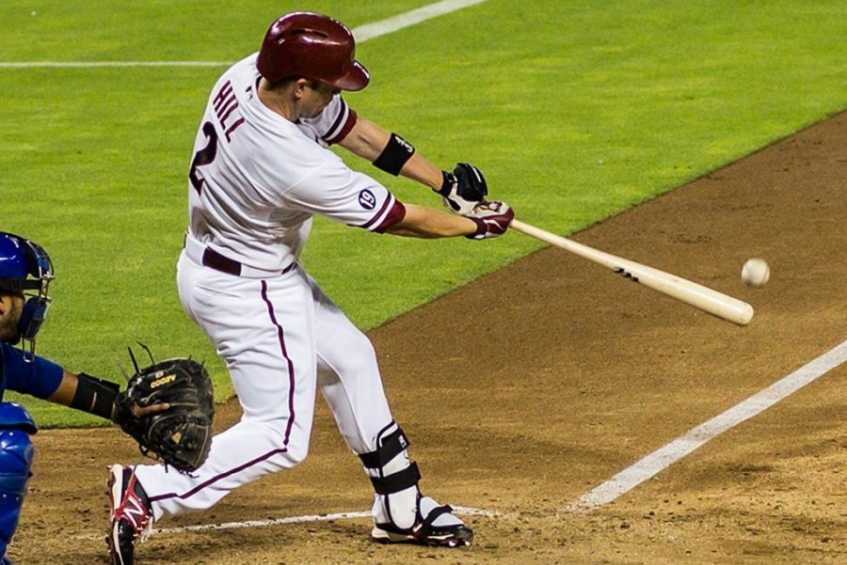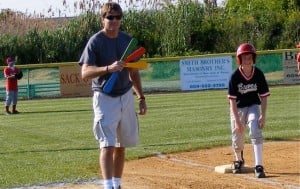
Friday Base Running Tips
Tag Up Base Running Decisions
Developing base runners to make the right decisions is the goal of the baseball coach. One of the toughest parts of teaching good base running comes with tag up plays. On some batted balls, there is no absolute rule about tagging up, which creates a dilemma for coaches and base runners. Often, knowing when it is best to tag up and when not to tag up is variable and a wait and see approach is necessary. Of course, sometimes the solution to tag up is obvious, whereas other times the instincts of the coach and/or base runner come into play. 
Because of these variable rules when tagging up is a good thing, young players need time learning about tagging up dos and don'ts. Of course, even major league base runners have plays where various options present themselves.
Obvious Tag up Base Running Situations
As one can see with this last scenario, it gets tricky as to when a total tag up is necessary and when not. It is worth noting that at the youth levels of baseball, there may be no such thing as a routing fly ball, but base runners should still abide by these rules, as they will still advance at least one base, even when balls drop. Besides the above listed situations, most other base running situations create options for runners as to when to tag up.
Variable Tag up Base Running Plays
Following up on the last case scenario, with runners on any base and a line drive hit far from the base they occupy, runners should either freeze or begin to move back slightly towards the base they came from, without totally tagging up. The reason for this is that a total tag up may put them in jeopardy of being thrown out by outfielders when the line drives get through. Freezing allows them to go in either direction safely.
Runners on third base:
Runners' first move on any ball hit in the air, line drive, pop up or fly ball, should be back towards the bag. However, when the ball is not deep or medium depth in the air, they should wait and see what the result of ball is, without going completely back to tag up. The reasoning is that they will still be able to score or tag up in this manner, when those are not guaranteed by tagging up. Of course, if a circus catch is made, players may still be able to hustle bag and tag up at the last moment. This is one of those situations when speed and baseball instincts pay off.
Runners on Second Base
Tagging-up decisions at second base are not as cut and dried as with third base decisions. The deepness of the fly ball determines whether tagging up is a good idea or not at second base, as does the number of outs. With no outs, second base runners should tag up on deeper hit balls. With one out, they should only do so when balls are deep enough and fielders are totally camped under balls. When in doubt on fly balls with one out, players should go half way off second and not tag up. The worst-case scenario is having a runner thrown out at the plate or not advancing on balls that drop because players are tagging up. Runners must learn that they are already in scoring position at second so it is not mandatory to get to risk going to third base on decisions when they have doubts about being safe
First base runners
Most fly balls with less than two outs require runners at first to go half way and not tag up. Coaches should teach players what halfway means, as it is variable depending on how far the ball is from the base they inhabit.
Good coaches constantly remind base runners as to how many outs there are and that running on all batted balls with two outs is mandatory. Coaches and players, who know the outfielders' arm strengths and their own running speed, greatly enhance making the right base running tag up decisions. Once tagged up, coaches often must make the call when players should try to advance after the catch, until players become comfortable making the call themselves. Finally, coaches and players must go by their instincts in some situations, which lead to good calls about the tag up base running plays.
After playing major league baseball, Jack Perconte has taught baseball and softball since 1988 and offered valuable coaching training too. He has helped numerous youth players reach their potential, as well as having helped parents and coaches navigate their way through the challenging world of youth sports. Jack is one of the leading authorities in the areas of youth baseball training and coaching training advice.
All Jack Perconte articles are used with copyright permission.There are 0 comments on "Base Running Tag up Rules - 365 Days to Better Baseball"
chandler allen says:
"Hi my name is chandler, i’ve enjoyed..."
On Wanting to tryout for summer ball. as an 18 year old
david graham says:
"With no current MLB team in Canada,..."
On With no current MLB team in
Charles Chavez says:
"To All Coaches: Do you have13U or..."
On Looking for Games